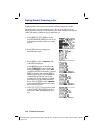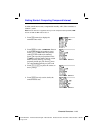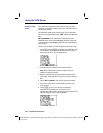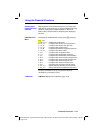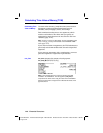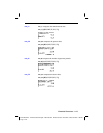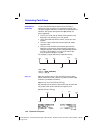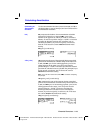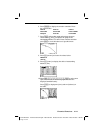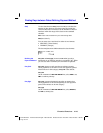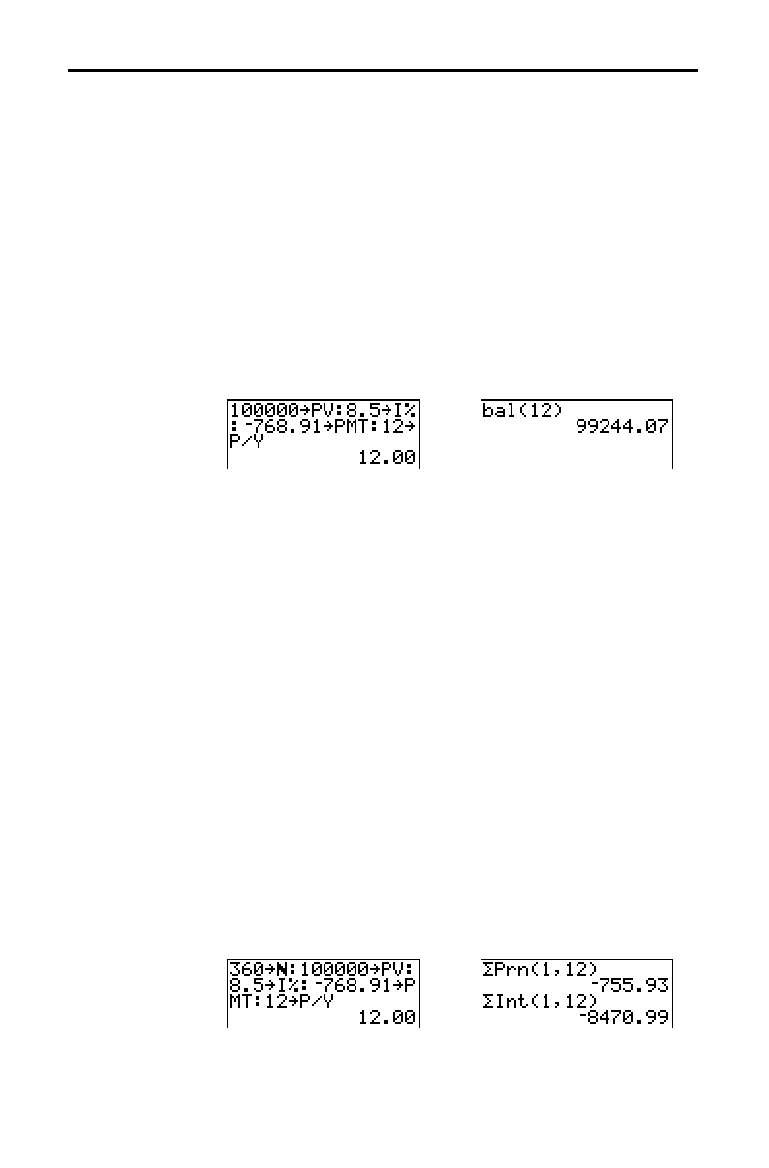
Financial Functions 14-9
8314FINA.DOC TI-83 international English Bob Fedorisko Revised: 02/19/01 12:50 PM Printed: 02/19/01 1:38 PM
Page 9 of 14
Use the amortization functions (menu items 9, 0, and A) to
calculate balance, sum of principal, and sum of interest for
an amortization schedule.
bal( computes the balance for an amortization schedule
using stored values for
æ
, PV, and PMT.
npmt
is the
number of the payment at which you want to calculate a
balance. It must be a positive integer < 10,000.
roundvalue
specifies the internal precision the calculator uses to
calculate the balance; if you do not specify
roundvalue
,
then the TI
-
83 uses the current
Float/Fix decimal-mode
setting.
bal(
npmt
[
,
roundvalue
]
)
G
Prn(
computes the sum of the principal during a specified
period for an amortization schedule using stored values for
æ
, PV, and PMT.
pmt1
is the starting payment.
pmt2
is the
ending payment in the range.
pmt1
and
pmt2
must be
positive integers < 10,000.
roundvalue
specifies the internal
precision the calculator uses to calculate the principal; if you
do not specify
roundvalue
, the TI
-
83 uses the current
Float/Fix decimal-mode setting.
Note:
You must enter values for
æ
,
PV
,
PMT
, and before computing
the principal.
G
Prn(
pmt1
,
pmt2
[
,
roundvalue
]
)
G
Int( computes the sum of the interest during a specified
period for an amortization schedule using stored values for
æ
, PV, and PMT.
pmt1
is the starting payment.
pmt2
is the
ending payment in the range.
pmt1
and
pmt2
must be
positive integers < 10,000.
roundvalue
specifies the
internal precision the calculator uses to calculate the
interest; if you do not specify
roundvalue
, the TI
-
83 uses
the current
Float/Fix decimal-mode setting.
G
Int(
pmt1
,
pmt2
[
,
roundvalue
]
)
Calculating Amortization
Calculating an
Amortization
Schedule
bal(
G
Prn(,
G
Int(




